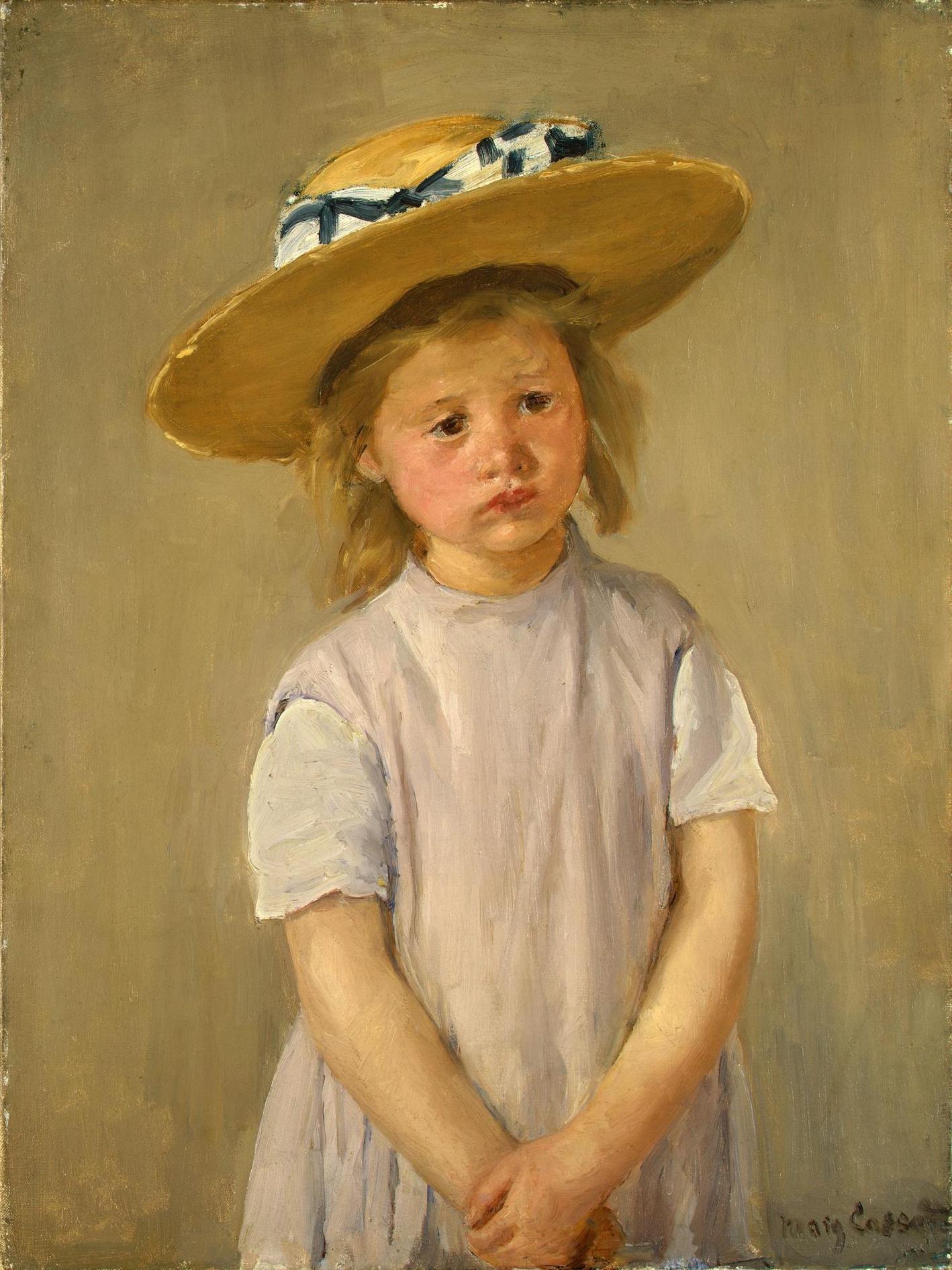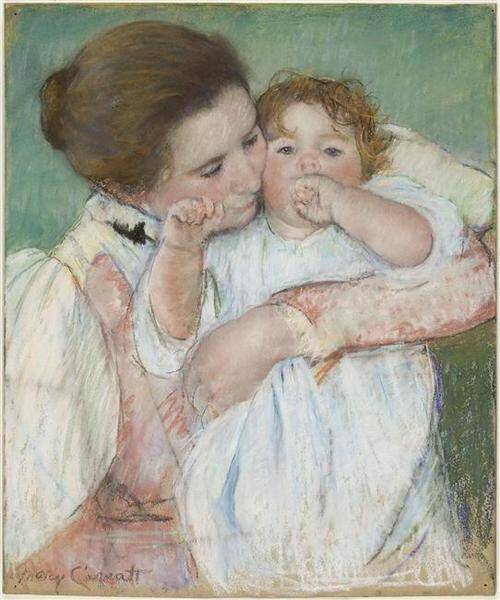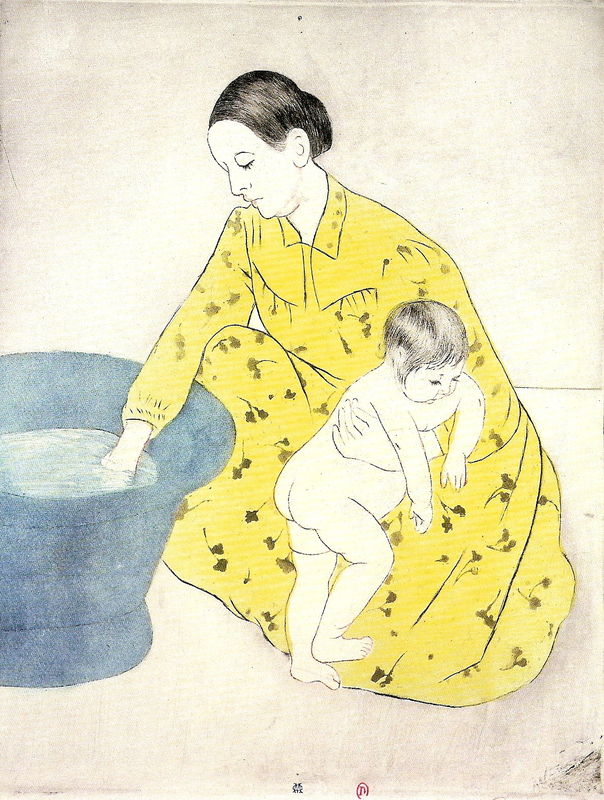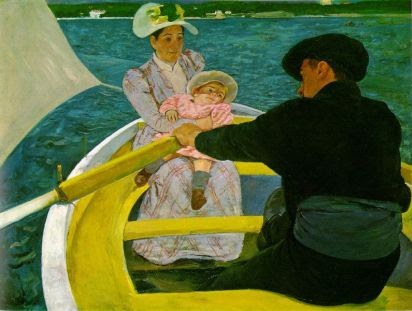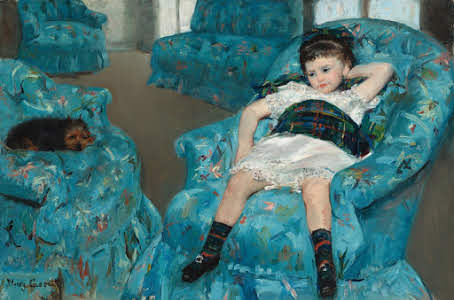Mary Stevenson Cassatt, known as Mary Cassatt, was born in 1844 in Allegheny City (now Pittsburgh), Pennsylvania, into a very wealthy family. Her father was a rich banker, and her mother was fluent in French. During her youth, she traveled frequently in Europe with her family, who settled in Paris in 1851 and then in Germany from 1853 to 1855. During this time, Mary Cassatt learned French and German. She then returned to Pennsylvania, where she studied at the Pennsylvania Academy of Fine Arts from 1861 to 1865. At the end of the Civil War in 1866, she returned to Paris and studied in the studio of Jean-Léon Gérôme (1824–1904), a painter and sculptor of the French academic and Orientalist movements. During the Franco-Prussian War of 1870-1871, she went to Pennsylvania and then returned to Europe, travelled to Italy and Spain, and then settled permanently in Paris in 1873 with her mother and her sister Lydia.
Mary Cassatt exhibited at the Salons of 1872 and 1874, but was rejected from those of 1875 and 1877. She then became involved with the Impressionist movement, particularly under the influence of Degas. Edgar Degas was captivated by the poise of this distinguished young woman from the American upper class and made her his model. As for Mary Cassatt, she drew inspiration from Degas's artistic ideas and, on his advice, participated in the 4th, 5th, 6th, and 8th Impressionist exhibitions.
It was under the influence of Mary Cassatt and John Singer Sargent (1856-1925), another American painter, that Impressionism spread to the United States. In 1886, art dealer Paul Durand-Ruel organized a major Impressionist exhibition in New York, which established this artistic movement in North America. The prominent American collector Henry Osborne Havemeyer (1847-1907) purchased numerous Impressionist works, likely at the urging of his wife, Louisine Elder, Mary Cassatt's childhood friend.
In 1891, Mary Cassatt held her first solo exhibition at the Durand-Ruel gallery in Paris. In 1894, she acquired the Château de Beaufresne in Mesnil-Théribus, in the Oise region. Until 1912, Mary Cassatt continued to travel in Europe and the United States. From 1914 onward, she gradually became blind and had to give up painting. She died in 1926 in Mesnil-Théribus, where she is buried.
ARTWORK
In her youth, Mary Cassatt was influenced by the work of Manet. When she met Degas and occasionally modeled for him, she drew inspiration from his artistic concepts. Mary Cassatt's work includes many interior scenes, portraits of her loved ones, especially her sister Lydia, as well as genre scenes of children or the mother-child relationship.

|
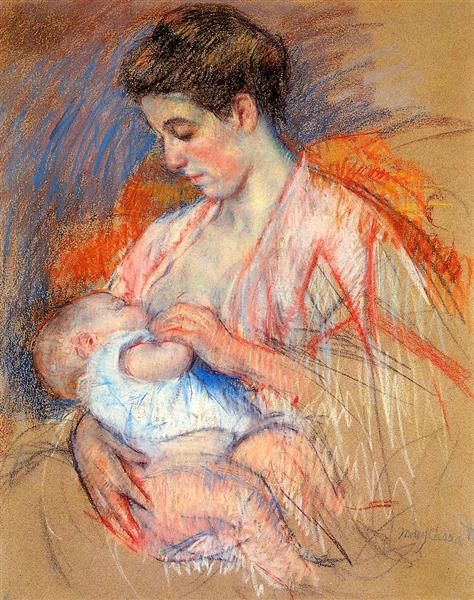 |

|
 |

|

|
In the 1880s, like many other painters, she was influenced by Japanese prints. In some paintings, she imitated the style of these prints, emphasizing drawing. A search for asymmetry also appears in some of her paintings.
The main theme of her work, from the 1990s onwards, is motherhood. Portraits of women and children constitute the bulk of her output, with her sister Lydia or Susan, a cousin of her housekeeper, serving as models.
Mary Cassatt is a remarkable colourist whose talent is evident from her early canvases inspired by Manet to her later, very personal style.
Mary Cassatt. Children Playing on the Beach (1884) . Oil on canvas, 98 × 74 cm, National Gallery of Art, Washington.
Mary Cassatt. Child with a Straw Hat (c. 1886) . Oil on canvas, 65.3 × 49.2 cm, National Gallery of Art, Washington.
Mary Cassatt. Mother and Child on a Green Background or Maternity (1887) . Pastel on paper, 55 × 46 cm, Musée d'Orsay, Paris.
Mary Cassatt. The Bath (1891) . Aquatint and drypoint on paper.
Mary Cassatt. The Boat Ride (1893-94) . Oil on canvas, 90 × 117.3 cm.
Mary Cassatt. Little Girl in a Blue Armchair (1878) . Oil on canvas, 89.5 × 129.8 cm.

|
 |
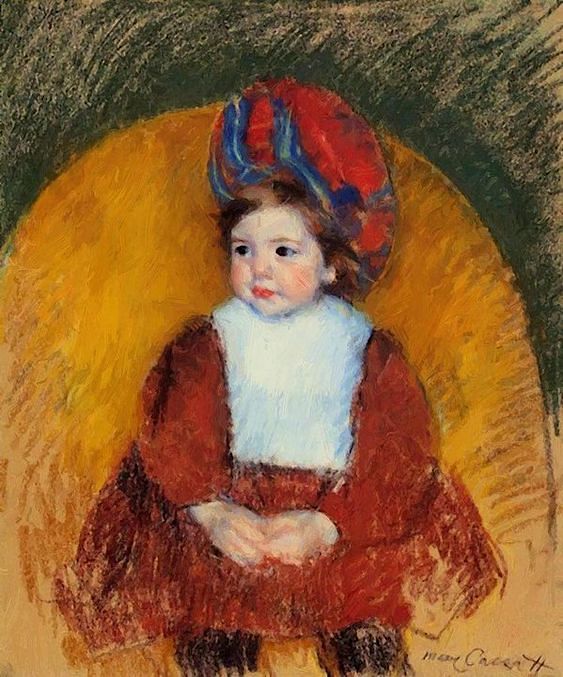
|
 |
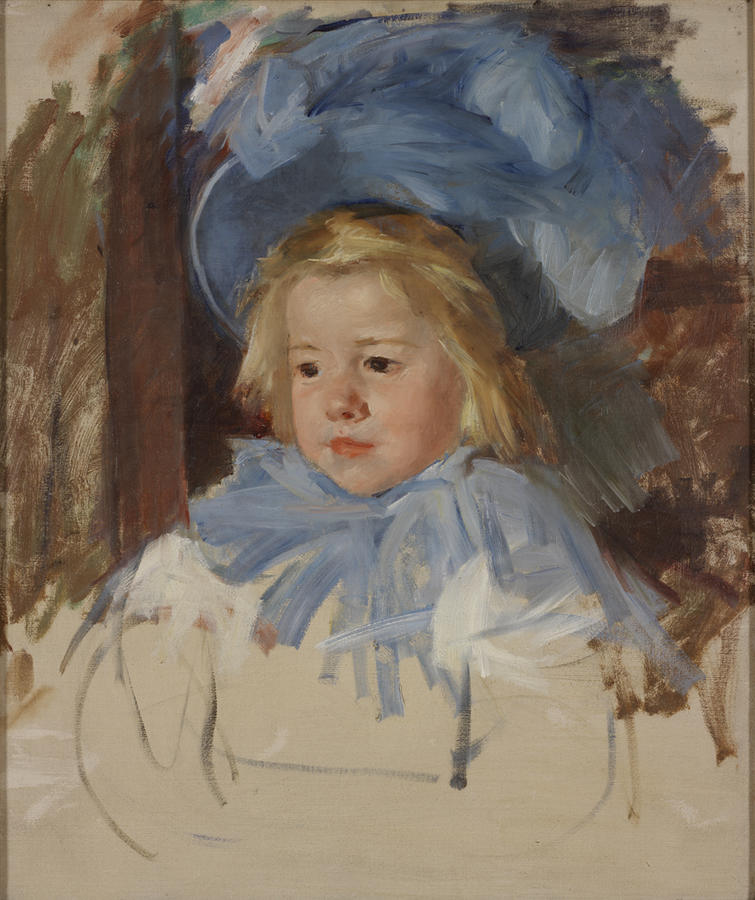
|

|



